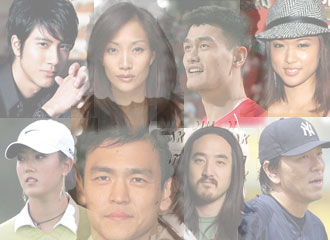In less than half a century Asia has gone from being the world’s problem child to the world’s prosperity engine. During that same time Asian Americans have gone from wanting to distance themselves from Asia to seeking ways to profit from its growth. It’s no wonder that we Asian Americans are taking on a new face.
When I was a kid Asian faces came from characters like Hop Sing, the gimpy cook on Bonanza reruns, the housekeeper Mrs Livingston on The Courtship of Eddie’s Father and random Asians playing Korean villagers on M*A*S*H. Asian faces were obsequious, subservient. Even Mr Sulu on Star Trek was mostly saying, “Aye aye, captain!” Of course there were the random Asian villains and soldiers who weren’t obsequious. But they were mostly doing a lot of yelling, screaming and dying. A lot of anger, desperation, pain. And because those were the only Asian faces Americans could see in the media, they became the faces attached to all Asians, including us Asian Americans.
Those aren’t the kinds of faces anyone likes to identify with, least of all kids who see themselves at the top of the school heap, academically and physically. Like a lot of Asian kids who tend to reach pre-adolescent maturity quicker than white kids, I was strong and tough for my age and dominated most of the other kids. Yet the images that occur to kids during play are those they just saw on TV last night. Even my best friend casually assigned me the role of Hop Sing when we were playing Bonanza. Of course I refused, but the mere suggestion did its damage. Is that the way everyone saw me? It was a devastating realization. And moments like those made me shun being identified with my Asian-ness. I suspect the same thought processes were repeated in the minds of most of the other Asian Americans who grew up in my generation and the generation after mine.
But the Asian faces beamed at kids today are different. Mixed in with some old-school images are Asian faces displaying intelligence, authority, humanity, a sense of humor. Many are dressed sharply, driving status cars, sitting in window offices with big desks and potted plants. Some are giving orders, running companies in gleaming skyscrapers. Some are hitting home runs, dunking baskets. A few are even being charming, sexy.
This change of Asian faces came about partly because Hollywood is now more conscious of its lucrative Asian audience and partly because we now have access to Asian media via the internet and cable channels. Whatever the source, a 12-year-old Asian American today has few reasons to want to avoid identification with Asian faces.
This change creates a bit of a cultural divide between Asian kids and their parents. The negative images that shaped us aren’t shaping our kids. Where we grew up feeling as though we’re succeeding despite American preconceptions about Asians, many of our kids may succeed because of those preconceptions. Our kids are growing up without the need for the defense mechanisms that have become ingrained in us. This introduces the likelihood that many of our kids and maybe all of our grandkids will write off our obsessive focus on prejudices and stereotypes as arcane holdovers from a bizarre era long past. At least that’s the hope.
On the other hand, the challenge from an ascendant Asia may lead to another major war. Then we may see all the old masks of anger, hate, evil and sly treachery overlayed onto our Asian American faces. Both possibilities stay firmly in mind even as I marvel at the slowly improving face of Asians in today’s America.

